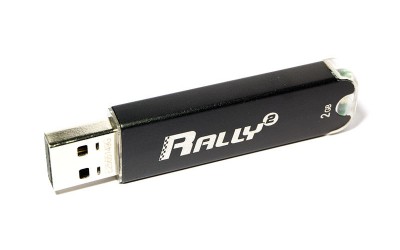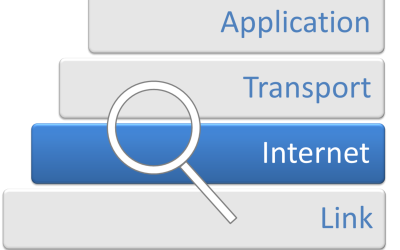
Data Recovery "detectives" DO exist - read on to find out more! Image courtesy of Wikimedia Commons.
By: Matt Wise, Technical Engineer and
Jennifer Schuler, Technical Writer
So you think your data is protected – solely because you have your computer files backed up on a secondary storage device such as a USB flash drive? Think again …
Data that is accidentally deleted, corrupted, or otherwise becomes infected and inaccessible can be recovered, yet depending upon the way in which the files were “lost” in the first place, it may or may not be an easy task.
Several options for data recovery exist. It can be done by scanning the hard drive to see if the imprint of the file still exists in binary form, then rewriting the file. Data can also be recovered from backups in other directories or on other computers, and from secondary storage devices such as a USB flash drive. Typically, data recovery software is employed to help recover the lost data, and many of these tools exist – it is just a matter of finding the one which best suits your recovery needs.

Don't assume that valuable data stored on a USB Flash Drive guarantees you backup protection. Image courtesy of Wikimedia Commons.
During its more than 10 years of serving clients, and protecting their computer systems and valuable data, Provident Technology has encountered several interesting data recovery scenarios. One of our customers came to us with a huge dilemma. He had at least 15 years of resumes, cover letters, and letters of recommendation stored solely on a USB flash drive. All of the files were somehow deleted from the drive. He was in the midst of trying to secure new clients, and needed these files recovered as soon as possible!
Although Provident Technology’s job was to recover those deleted files, it was not an easy task. To begin with, we were uncertain as to how our client’s files had been deleted in the first place. Though generally the manner in which files are deleted does not affect how we proceed in recovering them, the exception to that is if the user only sent them to the Recycle Bin and didn’t realize they could easily restore a file from there. What does affect how we recover files, however, are the measures that were taken before a file was deleted. For example, Windows has something called Previous Versions, which if enabled, makes it very easy to recover files and folders recently changed or deleted.
In this case there were folders left behind on the drive, though they did not contain any files. Therefore, we considered that most likely the USB drive was “dying.” Contrary to what some people believe, these storage devices do not last forever! The only other possibility was that our client had accidentally deleted his files on his own when he tried to delete something else.

Image courtesy of Wikimedia Commons.
The data loss recovery process for our client involved several steps. One of our Provident Technology Technical Engineers started by connecting the USB flash drive device to a computer with the recovery software. This process was coordinated from the engineer’s laptop.
The types of files we wanted to recover were set by selecting the file extensions from a list provided by the recovery software we employed. Once a scan of those file extensions was run by the software, we were provided with results of the “lost” files. This process can take a few hours to several days depending on the size of the drive. Although sometimes the results provided do include files and folders with their actual names, in most cases you only receive notice of “lost” files. These are files from which the names have been removed, but the actual file is still intact and its type is identified by the file extension only.
The next step was to copy the recovered files to an external drive. This can be the local hard drive of the recovery PC, if there is enough disk space, and for this job the recovery PC was the engineer’s laptop. If the user’s PC had the software, it could have been used since the files lost were not on his PC’s hard drive. In the final step, Provident Technology’s engineer sorted all of the recovered files, and removed any duplicates or corrupted files. In this particular case, the user had a relatively small USB drive of 4GB and total recovery time was about 6 hours.
Fortunately, Provident Technology was able to scan our client’s USB drive and recover 99% of his lost files. We used a tool called ‘Recover My Files.’ Recover My Files allows the recovery of files that were accidentally deleted, even from a hard drive that has been formatted. Typically, as long as new data has not been written to the drive, most files are recoverable in the case of accidental deletion. If the drive was formatted, however, then only those files that were not overwritten are recoverable.

Provident Technology is your BEST option for safely and securely locating and recovering your lost data. Image courtesy of Wikimedia Commons.
Hard drive crashes and a loss of data on other storage devices can be catastrophic, and range from having a few corrupted files to losing everything on your computer – including your hardware. Sometimes, as in the case of our Provident Technology client, years’ worth of irrecoverable data is the unfortunate end result. To avoid ending up in a similar situation (and with just as big a headache!) take the following precautions. By putting these simple, yet prudent, practices into place, you will protect your valuable professional and personal data – and gain peace of mind.
Protect Your Data!
- If data is important, do not store it in only one place or on only one device. Something so easily lost or destroyed as a USB flash drive should not be your sole storage option.
- USB flash drives do not last forever. Our customer thought as long as nothing happened to his drive, the data would remain intact forever. This is not true as these drives can indeed go bad.
- Install a software recovery tool before you encounter a lost data situation. Having a recovery tool already in place is the easiest and least expensive method to recover data deleted from a hard drive, including a USB drive.
- Be cautious about applications for recovering lost or deleted files that claim to be “free-ware” or “trial-ware.” Typically, these will not recover any files for you. Instead, they will show you the files that are recoverable and then require you to pay for the full version to actually recover your files. Save time and purchase the software up front!
- Buy a new hard drive. Continuing to use your former hard drive after a crash is risky. Although it is often possible to get some hard drives working again, it is far better to start fresh with a new, more reliable hard drive, rather than continue risking more data loss. In addition, a new hard drive will often have updated features in place to help prevent future disaster.
- Use caution if you are going to reassign your original hard drive as a secondary drive. Although this allows you to still have access to your original hard drive while running your computer from a new hard drive, this too is a risky proposition as it could lead to your new hard drive being compromised as well. It is critical that you find out what caused your crash in the first place, and that you do not install your new hard drive until you have resolved what affected the original hard drive.
- Attempt to recover lost data. After you have your computer up and running, you can attempt to recover the data off your original drive through using data recovery software. However, this will only be successful if the data that was lost is still recoverable. Otherwise, you will have no choice but to rebuild your digital existence.
- Use a professional and reputable technology company to help you recover your lost data and damaged hard drive or secondary storage device. Attempting data recovery on your own could lead to an even more severe situation if you make a mistake while employing a data recovery program.
- Contact Provident Technology for data recovery assistance.
One of the benefits of having Provident Technology handle data recovery is that we already own the software and we know how to use it. Data recovery software can be confusing, and you need to have knowledge of how hard drives work as well as file structures.
Of course, the easiest way to recover lost data is not to “lose” it in the first place! Provident Technology can help you with your business or personal storage and backup needs through our Managed Services. Click on the link provided to visit our Managed Backup page and learn more about protecting your business and its valuable data today!